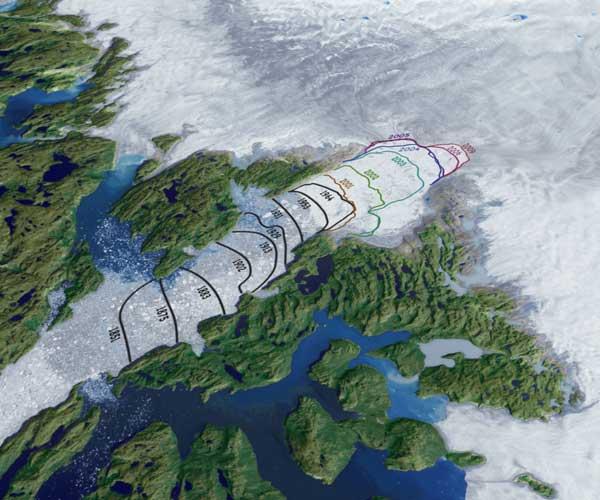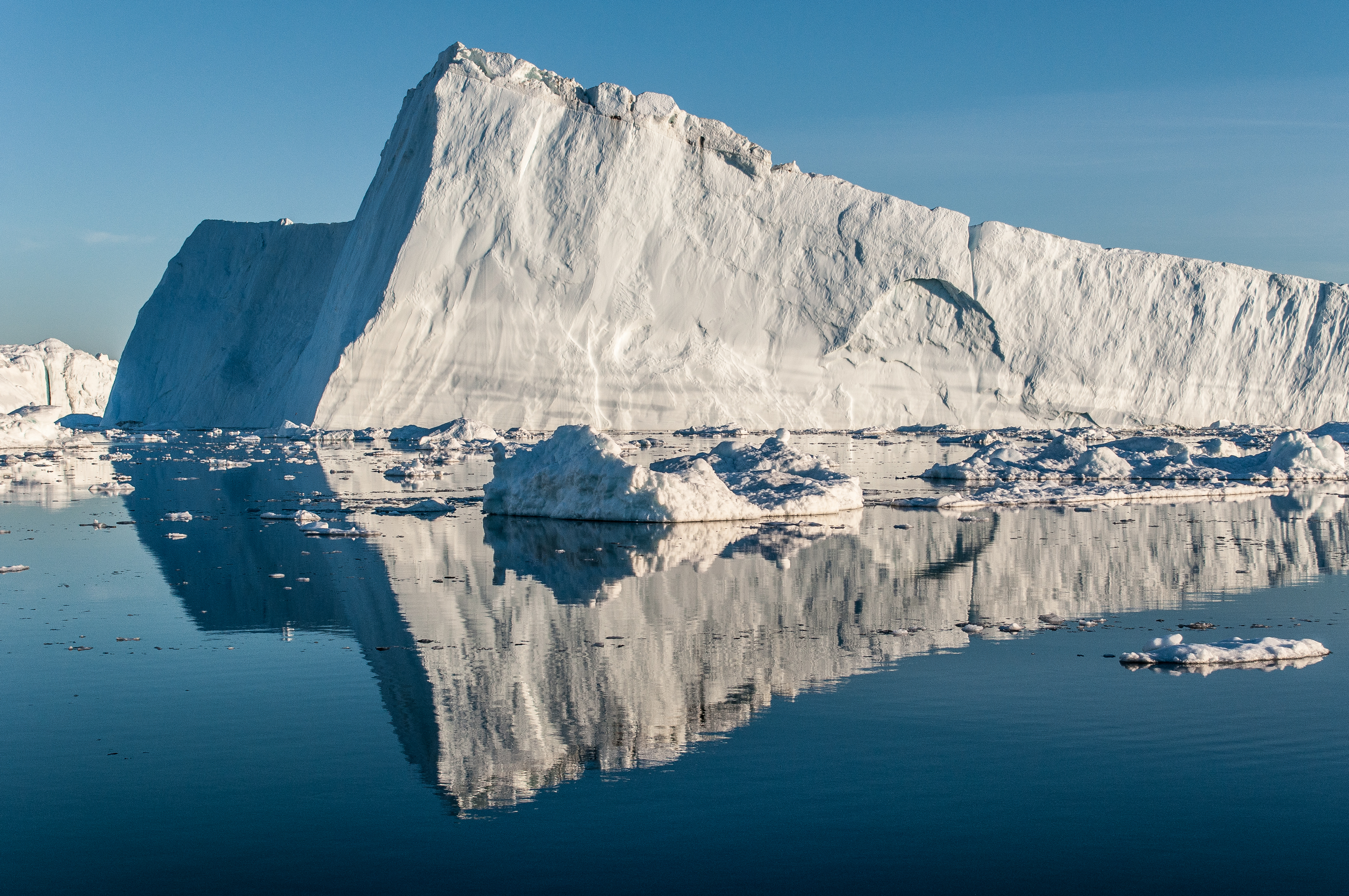Shrinking Greenland Glacier Smashes Speed Record

The world's fastest glacier broke its own speed record again, quadrupling its summer run to the sea between the 1990s and 2012, a new study finds.
In summer 2012, Greenland's Jakobshavn Isbrae Glacier raced more than 150 feet (46 meters) per day, faster than any glacier on Earth. That's 11 miles (17 kilometers) per year. In 2000, Jakobshavn flowed at roughly 6 miles (9.4 km) per year.
"We've been watching it for over a decade now, so it was quite a surprise when it popped up in 2012 with these unusually high speeds," said Ian Joughin, lead study author and a glaciologist at the University of Washington's Polar Science Center in Seattle. [See Photos of Greenland's Gorgeous Glaciers]
The swift pace continued through summer 2013, the researchers report today (Feb. 3) in the journal The Cryosphere.
The peak speed of four times faster than that clocked in the 1990s was only spotted in some sections of the glacier, by using computers to compare satellite images. Jakobshavn Isbrae slows a bit in winter but is still flowing roughly three times faster overall than in the 1990s, Joughin said.
The pace is also speedier than the record set by Alaska's Black Rapids Glacier in 1936, when the "Galloping Glacier" advanced more than 100 feet (30 meters) per day — a surge attributed to heavy snowfall.
Jakobshavn Isbrae is flowing at a record pace, because the glacier has lost its brakes. Right now, the glacier's edge (the tongue-shaped part that sticks out into the sea) sits above a deeply carved valley, about 4,260 feet (1,300 m) below sea level, which offers little resistance to its slide into the ocean. "The deeper that front is, the more it wants to ooze out of the ice sheet. At the point where the glacier meets the ocean, there's nothing holding it back," Joughin told Live Science.
Sign up for the Live Science daily newsletter now
Get the world’s most fascinating discoveries delivered straight to your inbox.

As the glacier crumbles and calves where it meets the ocean, millions of tons of ice drop into the sea every year. Despite the glacier's rapid flow, this collapse means Jakobshavn is actually retreating into the Greenland Ice Sheet. In 2012 and 2013, the ice front retreated more than a kilometer (a half mile) farther inland than in previous summers, the study reports.
Jakobshavn Isbrae is the largest contributor to sea level rise from Greenland, raising sea level by about 1 millimeter (0.04 inches) between 2000 and 2010.
Joughin said the deep valley beneath the glacier is responsible for the sudden change in speed starting in 2012. Though Greenland's ice sheet was hit with a massive surface melt in August 2012, which may quicken sliding glaciers, the Jakobshavn Isbrae Glacier first reached the deeply-carved valley in 2012.
Also, nearby glaciers didn't undergo massive retreats in 2012. "I haven't seen exceptional speed signals for that summer," Joughin said.
In the near future, because of Jakobshavn's deep valley, the glacier could flow even faster, the researchers report. "The increase [in flow] likely could reach or exceed a factor of 10 within decades," they wrote.
However, the finish line is in sight — within about a century. The deep valley ends after another 31 to 37 miles (50 to 60 km). Jakobshavn's retreat may slow once it hits bedrock, Joughin said.
A similar story could play out at other Greenland glaciers, researchers think. Recent studies suggest the shape of glacial valleys can influence how quickly glaciers retreat, and that some glaciers may slow when they shrink back far enough to hit narrow chokepoints.
Email Becky Oskin or follow her @beckyoskin. Follow us @livescience, Facebook & Google+. Original article on Live Science.










